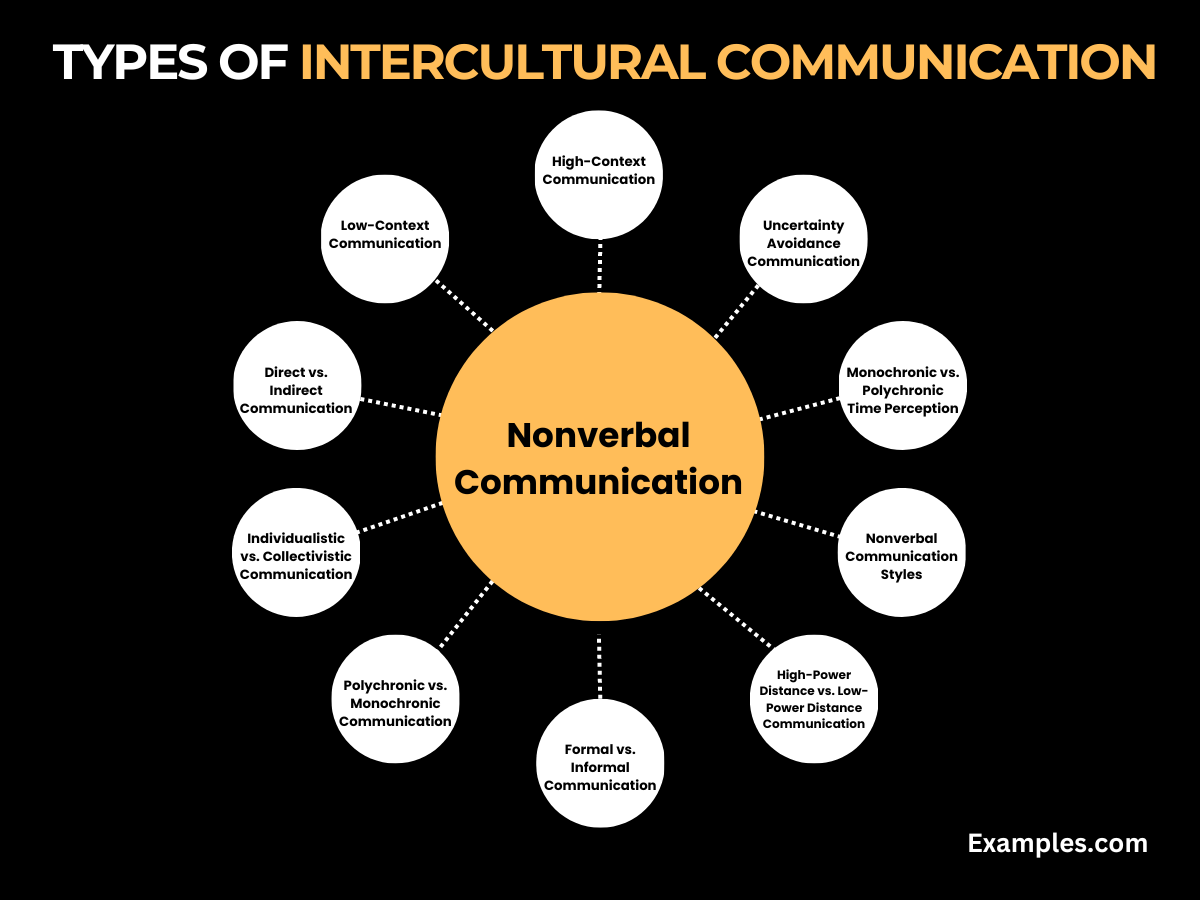Types of Intercultural Communication – Examples, Types
Embark on a comprehensive exploration of diverse intercultural communication types in this illuminating guide. From high-context to low-context communication, delve into nuanced examples and gain valuable insights to navigate cross-cultural interactions with finesse. This guide transcends theory, providing practical tips and real-world communication examples to enhance your cultural intelligence and foster meaningful global connections. Unlock the intricacies of intercultural communication and enrich your cross-cultural experiences.
Types of Intercultural Communication
Understanding the various types of intercultural communication is pivotal for navigating a diverse global landscape. This comprehensive guide delves into distinct communication styles, shedding light on the nuances and strategies that define successful cross-cultural interactions.

- High-Context Communication: High-context communication relies on implicit cues and shared cultural context, fostering deep understanding within tight-knit groups. This style, prevalent in collectivistic cultures, emphasizes nonverbal nuances, such as gestures and facial expressions, to convey meaning. It strengthens interpersonal bonds through a rich tapestry of implicit communication, creating a sense of unity within cultural communities.
- Low-Context Communication: In low-context communication, explicit verbal expression takes precedence, reducing reliance on shared cultural context. This direct approach, common in individualistic cultures, prioritizes clarity in conveying messages. Well-suited for diverse and unfamiliar settings, it minimizes the risk of misinterpretation and promotes effective communication in culturally heterogeneous environments.
- Direct vs. Indirect Communication: Differences between direct and indirect communication styles hinge on cultural norms shaping preferences for straightforwardness or subtlety. Direct communication, prevalent in individualistic cultures, prioritizes explicitness, while indirect communication, often found in collectivistic cultures, utilizes nuanced language and context, allowing for more implicit expression of ideas and feelings.
- Individualistic vs. Collectivistic Communication: Communication dynamics vary between individualistic and collectivistic cultures. Individualistic communication emphasizes personal autonomy, clear expression, and self-promotion. In contrast, collectivistic communication prioritizes group harmony, indirect expression, and consideration of others, fostering a collaborative and interconnected approach to interpersonal relationships and decision-making.
- Polychronic vs. Monochronic Communication: Cultures exhibit different perceptions of time through polychronic and monochronic approaches. Monochronic cultures value punctuality, task-focused schedules, and a linear view of time. In contrast, polychronic cultures embrace a flexible approach, emphasizing relationships over schedules and viewing time as holistic and fluid. These perspectives influence daily interactions, shaping expectations around time management and communication norms.
- Formal vs. Informal Communication: Communication formality varies across cultures, impacting relationship dynamics and professional interactions. Formal communication, prevalent in high-power distance cultures, emphasizes hierarchical structures and respectful language. Informal communication, often found in low-power distance cultures, promotes equality, open communication, and a relaxed tone. Understanding these nuances is crucial for effective communication in diverse settings.
- High-Power Distance vs. Low-Power Distance Communication: Power dynamics shape communication in high-power distance and low-power distance cultures. High-power distance communication, prevalent in hierarchical societies, emphasizes clear authority structures and formal communication channels. In low-power distance cultures, communication is more egalitarian, encouraging open dialogue and less emphasis on hierarchical structures. These dynamics impact decision-making, leadership styles, and overall communication patterns.
- Nonverbal Communication Styles: Nonverbal cues play a significant role in cross-cultural communication. Different cultures interpret gestures, facial expressions, and body language in distinct ways. Understanding these nonverbal communication styles is crucial for effective cross-cultural understanding, as it contributes to the richness and subtleties of expressing meaning and emotions without relying solely on verbal language.
- Monochronic vs. Polychronic Time Perception: Time perception influences daily interactions, and cultures approach time differently through monochronic and polychronic styles. Monochronic cultures prioritize punctuality, adhering to schedules, and viewing time linearly. In contrast, polychronic cultures adopt a more flexible approach, valuing relationships over schedules and viewing time as interconnected and fluid. These perspectives shape communication norms and expectations regarding time management.
- Uncertainty Avoidance Communication: Cultural attitudes toward uncertainty influence communication strategies. In high uncertainty avoidance cultures, there is a preference for clear rules, structure, and formal communication to minimize ambiguity. In low uncertainty avoidance cultures, there is a higher tolerance for ambiguity, fostering more open and flexible communication styles that accommodate uncertainty in decision-making and problem-solving.
- Masculine vs. Feminine Communication: Gendered dimensions impact communication styles, with masculine and feminine approaches varying across cultures. Masculine communication emphasizes assertiveness, competition, and task-oriented communication. Feminine communication, in contrast, prioritizes collaboration, empathy, and relationship-focused communication. Understanding these gendered dimensions enhances cross-cultural communication by recognizing and adapting to diverse cultural expectations and behaviours.
In conclusion, this comprehensive guide illuminates the intricacies of various intercultural communication types. From high to low context, direct to indirect styles, and beyond, understanding these dynamics is paramount for effective global interactions. Enriched with real-world examples, this guide equips readers to navigate diverse cultural landscapes, fostering mutual understanding and harmonious connections in an interconnected world.



